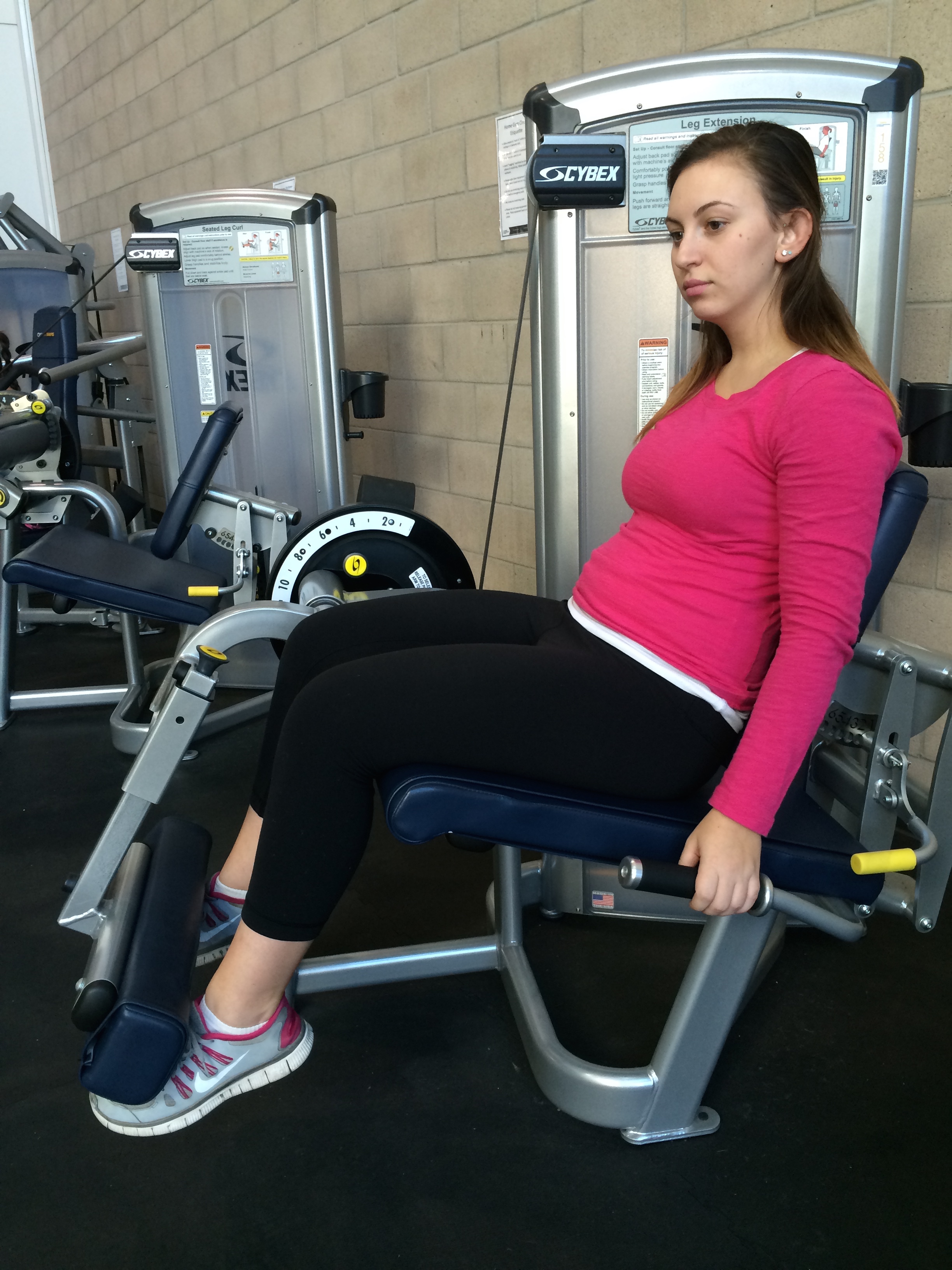Introduction:
Knee extension exercises are used to strengthen thigh muscles (i.e. quadriceps muscles) to improve physical performance, reduce knee injury risk, and rehabilitate knee injuries. In other strengthening exercises, the body exerts force through many different muscle groups. However, the knee extension exercise allows for isolated strengthening of the quadriceps. This can be useful in rehabilitation programs or personal training routines, as it focuses on a single muscle group.
Common Technique Recommendations:
There are many rumors about proper knee extension exercise technique. One significant rumor – cited by sources like Livestrong and Fitness by Mercola – is that knee extension exercises put the individual at risk for ACL injury. There are also claims that the knee extension exercise can cause excess wearing of the patellar cartilage. These sources do not present scientific evidence to support these claims.
One common misconception regarding knee extension is that it is a “safer quadriceps workout” than squats, lunges, or other strengthening exercises. In reality, every exercise has its dangers – especially when doing it incorrectly – so to label one exercise as generally safer than the other can be misleading. Relative safety of exercises depends on injury history, personal anatomy, and exercise goals.
Evidence Based Recommendations:
We reviewed the scientific literature and performed anatomical and biomechanical analyses to evaluate the effects of various knee extension techniques on muscle, ligament and bone loading. Based on these analyses, we provide the following recommendations.
- Make sure your upper leg and your lower leg form an angle that is most beneficial to you. There are benefits and potential dangers in every starting leg position. In the following examples, consider a fully extended knee to be at a 180-degree angle. Many health experts claim that it is important to start this exercise with your legs in a 90-degree position. However, there are pros and cons to every leg position. If the angle is greater than 90 degrees (more extended), you will not experience the full range of motion or the full exercise. If the angle is less than 90 degrees (more bent), you will create greater compression forces between the patella and the femur. Health professionals generally choose 90 degrees in order to achieve the best muscle engagement with the least patellar compression, but depending on your personal anatomy and exercise goals, an angle other than 90 degrees might be more beneficial to you.
- Focus on keeping the rest of your body stationary. If you allow your body to move during this exercise, you are ultimately compensating with other muscle groups. This will compromise the effectiveness of the exercise and could even cause injury, depending on the extreme to which you are compensating.
- Do not allow your knees to lock in the extended position. As the knee extends into full extension while lifting a particular weight, strain on the anterior cruciate ligament (ACL-a major ligament of the knee) increases. Depending on your personal anatomy, this ACL strain could reach hazardous levels.
- If you experience joint pain, decrease the external weight or move the weight bar further up from your ankles. Decreasing the weight will decrease knee loading, which should both relieve any joint pain and decrease ACL forces. Moving the external weight further from your ankles has the same effect.
Conclusions:
Knee extension exercises provide a means to strengthen quadriceps muscles without involving other muscles, which can be useful for general strength training, injury prevention and injury rehabilitation. A variety of people can benefit from knee extension exercises. In regards to rehabilitation, people with injuries that would prevent them from doing squats or lunges can perform knee extensions to maintain quadriceps muscle strength. Examples of such injuries include those to the lower back, ankle, or perhaps even shoulder. Quadriceps muscle strength is important to the performance of many activities (e.g. running, cutting, lifting objects) and knee extension exercises can improve quadriceps strength.
It is important to select a proper weight to lift and a proper range of motion. Loading too much weight or extending the knee too far can increase ACL strain during knee extension exercises. These ACL loads will vary between individuals, but increasing ACL loads over an extended period of time could possibly cause long-term damage to the ACL and make it more vulnerable to injury. Loading too much weight and bending your legs too much at the start of the exercise can lead to extreme pressure between the patella and the femur, which could potentially damage the cartilage between them. Make sure to load conservative amounts of weight onto the machine, be aware of the flexion angle at which you start the exercise, and don’t fully extend the knees.
